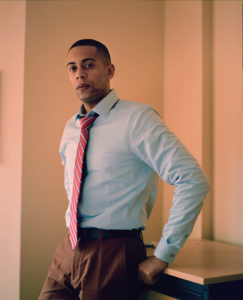By David Crow
Financial Times Magazine
Anthony De La Rosa was 22 when a player on his college baseball squad introduced him to a new drug: Oxycodone. “We weren’t just smoking weed any more. We would go to practice, come back and snort Oxy in the dorm rooms. At that time, I was told it was a muscle relaxant, so I didn’t know about addiction. I didn’t know anything.”
In fact, Oxycodone is a highly addictive painkiller and a molecular cousin of heroin. When De La Rosa encountered it in 2012, America was awash with opioid painkillers. Doctors prescribed 234 billion milligrams of morphine equivalent that year, nearly 10 times more than two decades earlier. They were emboldened by research, paid for by Big Pharma, which claimed there was little risk of addiction — despite centuries of evidence documenting the dangers of the euphoria-inducing opium poppy.
The marketing power of drug companies and laissez-faire attitude of doctors has fuelled one of the worst public-health epidemics of modern times, which ended up proving ruinous for De La Rosa and millions of others. Middle-aged patients with bad backs became addicts. Teenagers pilfered tablets from their parents. And when the pills started to run out, many turned to heroin. In 2016, 42,200 Americans died from an overdose, more than from either car accidents or gun violence.
 I meet De La Rosa, a native of Queens, New York, on a snowy morning at Odyssey House, a publicly funded residential rehab centre in East Harlem. He has a tall, athletic build that befits a former college sports star and is dressed as though he has just come from church: blue cardigan, crisp pale shirt, red striped tie. With a stare at once earnest and intense, he recounts how it all went wrong.
I meet De La Rosa, a native of Queens, New York, on a snowy morning at Odyssey House, a publicly funded residential rehab centre in East Harlem. He has a tall, athletic build that befits a former college sports star and is dressed as though he has just come from church: blue cardigan, crisp pale shirt, red striped tie. With a stare at once earnest and intense, he recounts how it all went wrong.
Although people in recovery are encouraged not to glorify the past, he cannot help remembering the good days. “I still have memories of a time when I wasn’t worried, when everything was all right. I liked the feeling I got when I took Oxy. The pills did their job, they always made me feel good.”
Click here to continue reading.
